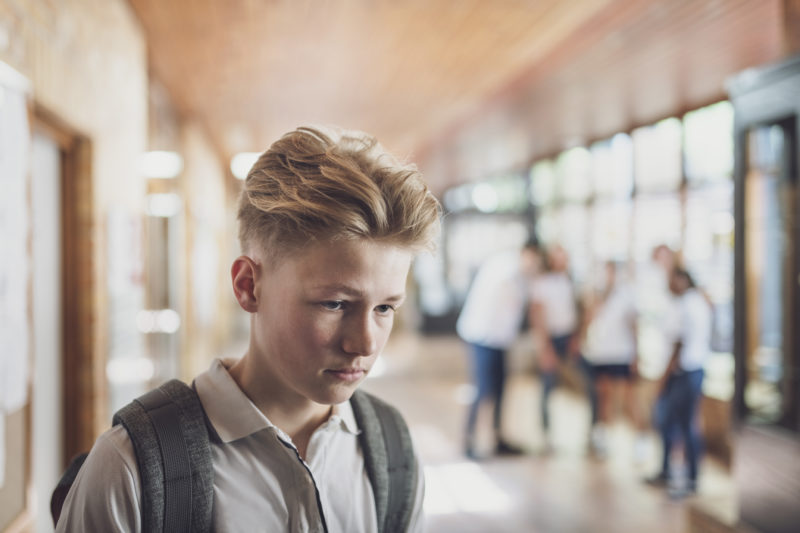School bullying is one of the most serious problems affecting the educational system today. Why have some countries made impressive progress in preventing and addressing bullying? What are the contributing factors? Is it sufficient to have anti-bullying legislation in place and to punish the perpetrators? What are the components of effective programs to eliminate school violence? And what tools can teachers use now to begin changing the situation for the better?
Tigran Yepoyan, UNESCO Regional Adviser on Health Education, discussed Russian and international experience of responding to school-based violence and bullying in an interview for Letidor, a popular Russian online resource for parents. Some extracts from the interview have been included in a more comprehensive publication in the End Bullying! series; its full version is available here (Russian only).
School violence, bullying and cyberbullying: What is behind the numbers?
According to the new UNESCO report Behind the numbers: Ending school violence and bullying (2019), one in three students globally has faced various forms of peer violence and bullying at school. The experience of peer bullying has long-lasting effects on most children and adolescents and can leave some youngsters deeply traumatized. In fact, not only the victims, but also the perpetrators and eyewitnesses of bullying can experience significant negative effects on their physical and mental well-being.

In particular, school students repeatedly exposed to bullying and cyberbullying are more likely to engage in risky behaviors – such as experimenting with psychoactive substances and alcohol and practicing unsafe sex – putting them at high risk of unwanted pregnancy, HIV and other STIs.
Compared to their peers, adolescents who are frequently bullied are:
- three times more likely to feel like an outsider at school
- twice as likely to miss school and also more likely to leave formal education after finishing secondary school
- twice as likely to feel lonely, to be unable to sleep at night and to have contemplated suicide as those who do not face bullying.
UNESCO and other UN agencies have been monitoring the prevalence and trends in school violence, bullying and cyberbullying in all regions of the world, with a special focus on studying the effectiveness of anti-bullying programs and interventions.
What national responses to school bullying have been successful?
Particularly successful in addressing this problem are countries which have legally prohibited all forms of violence against children and adopted educational policies which clearly define bullying and spell out step-by-step interventions and the rights and responsibilities of all parties involved. Examples of effective national responses include Sweden, the Netherlands, certain states in the USA, and the Republic of Moldova. But having anti-bullying laws is not enough.
Is the act of identifying and punishing the perpetrators sufficient to end bullying? Unfortunately, it is not necessarily so. That is why all efforts to punish bullying behavior must be accompanied by educational and psychological interventions. It is essential, first, to break the silence around violence and bullying and second, to empower the victims and to help – not just to punish – the perpetrators who tend to behave aggressively to teach them ways to manage their aggressiveness, according to Yepoyan.
Countries found to be really successful in addressing school-based violence are those which have adopted a comprehensive approach. Among other things, they promote a safe and positive learning environment; train teachers and other school staff in skills needed to prevent and respond to violence and bullying; engage parents and the local community in responding to the problem; and provide support and referrals for victims of bullying and violence.

Experts have found programs originating in northern European countries particularly effective for the above reasons. These interventions include the Olweus Bullying Prevention Program from Norway and the KiVa program from Finland, which have since spread to other countries and informed multiple guidelines and local programs. See more on the content and effectiveness of these and other programs here.
What tools are available to teachers?
By far not every country has anti-bullying legislation in place or a well-designed educational policy at the national level to prevent and contain school-based violence. UNESCO IITE has been supporting the Russian Federation and other countries of the EECA region for a number of years in developing their own guidelines and tools for educational staff to respond to bullying in schools. In Russia, for example, the third consecutive edition of the Guidelines for the Prevention of Violence in Educational Institutions has been published.
These guides provide simple yet essential advice for teachers on how to create and sustain a positive atmosphere in the classroom, how to avoid engaging in ‘teacher-perpetrated violence’ or provoking peer violence and bullying, and how to recognize signs of peer violence and to intervene promptly.
It is imperative that all adults working at school, including security guards, cafeteria workers, cleaning personnel, psychologists and counsellors, should have the knowledge and skills to recognize and stop bullying. These recommendations can be implemented by a committed teacher (or better, a group of committed teachers), with support from the school’s administration.
See more information on UNESCO IITE efforts to end school violence, bullying and cyberbullying here.
